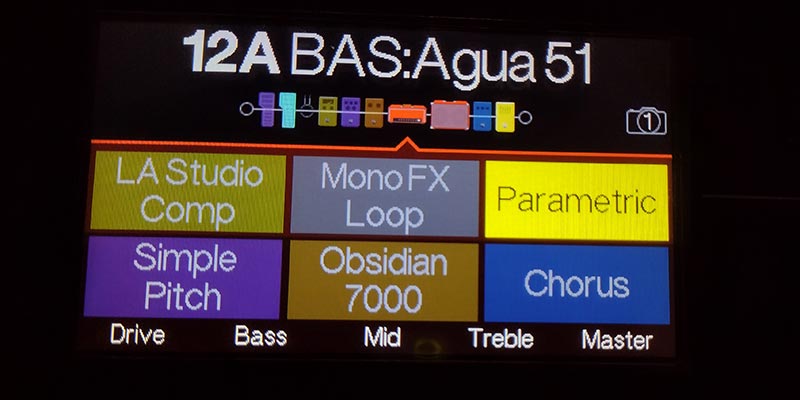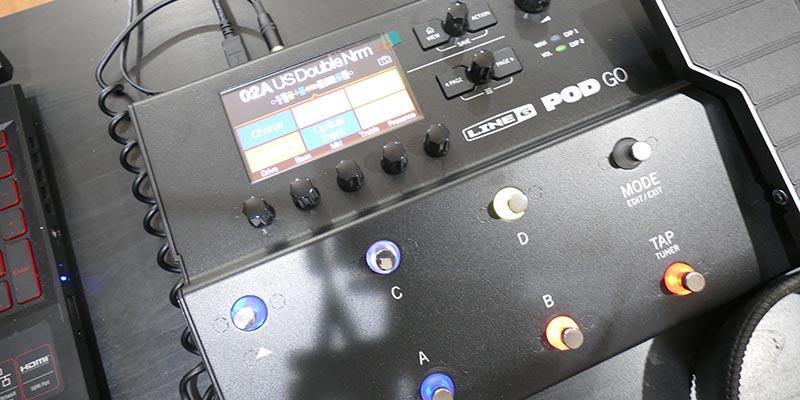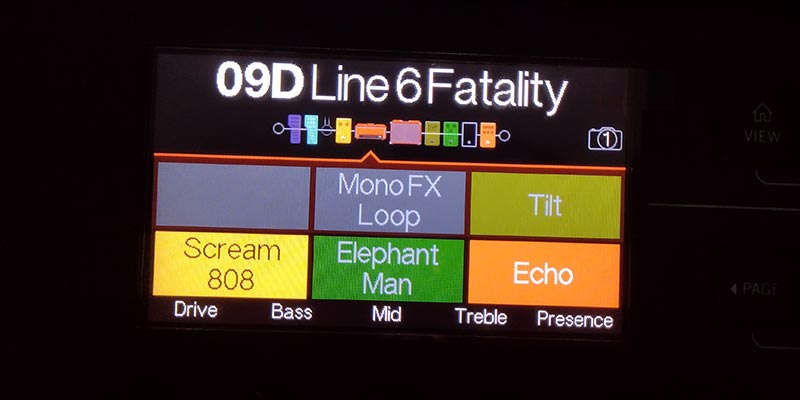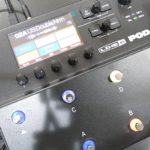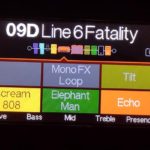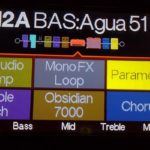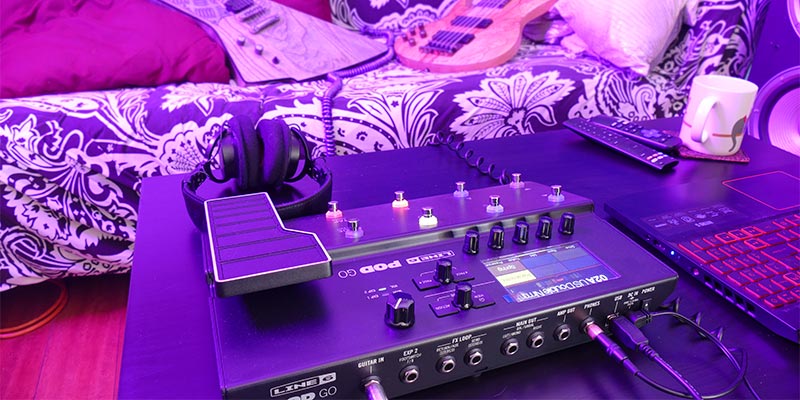Gear Review: Line 6 POD Go
Line 6 POD Go Review
I’ll be honest here (well, duh, who wants a dishonest review?)… I bought this unit so I could “play more guitar”. Yeah, I get it… you shouldn’t GAS out and buy stuff out of the silly belief that it will make you play better, make you play more, you need it, etc. However, I also realized this year that some of the most influential and revered guitarists are indeed gear heads, and they too are prone to buying more guitar stuff simply… because. Yes, your favorite guitar god is likely a guitar pedal nerd too. Simply put, if they can use gear to get excited and motivated about playing guitar, why can’t I?
Let me further say that this isn’t really a piece of gear that I need. I haven’t played a live show in years, and have no immediate plans to return to the stage. For home recording, I have all my needs covered with several amp sim plug-ins that sound great to me. I even have a few “real” tube amps (like, actual good ones that get loud as fuck) should I ever need them. One thing that motivated me to get the POD Go is that should I ever decide to return to playing live, I’ll now have a lightweight and compact option rather than having to lug a half stack down several flights of stairs.
If it ever comes up, I’ll be EXTREMELY happy to buy or rent a FRFR cabinet and use that, or even just go through floor wedges or in-ears entirely. The main outputs are balanced OR unbalanced, which gives you a lot of options on stage. That’s one thing that it’s very well suited for, is live-playing situations. The user interface is pretty much designed for that, and if you use the “snapshots” feature you can turn effects on/off and switch between effects without your sound cutting out (which is pretty much the bane of every multi-effect pedal during a show).
How does it sound? Well… It sounds great to me, but let me get a bit more nuanced. To me, it sounds like a Line 6 POD, but just better. It’s basically just a 2022 POD- but I mean that in the best way possible. Like, (coming from an old guy’s perspective) it’s the POD of the future, and the future is now. I guess what I’m saying is, it absolutely retains the essence of Line 6’s older entries, but gives you a lot more on top of that.
I’ve always felt that there was a sort of uniformity to the POD’s sound, a “sameness” in the overall tone of the unit. That’s still there, and although the sounds have improved leaps and bounds, there’s still a sort of overall tonal quality that is retained from the older units. This is not exactly anything having to do with the realism of the am models, but perhaps more of an overall EQ profile. I’ve found that this is a feature of Line 6 PODs that you either love or hate, or it’s ultimately subjective. One thing I can say to qualify it a bit, is that when you A/B the POD Go against the BOSS GT-100, the BOSS consistently sounds louder towards the upper end of the spectrum. To my ear this makes ⅓ of the presets sound more “real” and present, while the other ⅔ sound more brittle, harsh, and fizzy. Th Line 6, on the other hand, might sound a bit more “round” and dull with some of the distortion sounds, but overall the presets are much more consistent and usable in a mix. The distortion sounds (even the ultra high-gain models) sound fine, and more upper frequencies can be EQ’d back in if necessary. The rounder, more fuller tone of the unit also seems to treat the clean tones a bit better by taking the upper edge off of harsh twangs.
While the original PODs gave you minimal control over effect parameters, the GO gives you pretty much everything you could ask for in that department. It’s a bit obscene, actually, when you compare it to earlier PODs. I will say that the overall “sound” of many of the effects have not changed from what is expected of Line 6. However, this is very intentional, especially when you consider that many of the effects are modeled after their own sought-after pedal and rack effect modules. So basically, they’re modeling their old modelers from the early 2000’s (and they sound the same!).
With that said, the actual amp models have vastly improved since even 10 years ago. Not only are there a few dozen more amps to choose from, but the current models use the same technology from Line 6’s flagship Helix modelers. The Helix modeling algorithms were designed to compete with the current state of the art, particularly with Kemper and Fractal products. So those are in fact noticeably more real, more responsive, and more tonally varied than what the earlier PODs had to offer.
One other thing worth mentioning is that the bass guitar presets and amp models are really nice to have, and sound awesome. The Ampeg, SVT, and Aguilar presets were all lots of fun, and fit nicely in a mix. I don’t really have much experience with various bass amps, but as far as I could recall they sound as accurate and “true-to-the-real-amp” as the guitar models do. Back in the day, Line 6 offered a dedicated “bass POD” that was really kind of not worth the money, so it’s nice to see them improve the models immensely and package them in the same unit as the guitar models. Some guitar presets also sound surprisingly good on bass.
The only real drawbacks are that the amp and FX chain is limited to essentially one rig. Meaning, you get an amp, a cab, and a fixed amount of effect blocks. No multiple amp modeling, no convoluted routing, no crazy amounts of DSP heavy effects. Understandably so, you’re going to have to invest in a Helix or comparable product if you want that amount of flexibility. One other (potential) disappointment with this unit is the fact that you can’t really output a clean “direct” signal at the same time as a processed signal. Actually you can, but you must have it hooked up to a computer via USB and essentially use the POD Go as an audio interface in order to achieve this. It would be nice if the unit were able to give you a bypassed “clean” DI and processed signal simultaneously using analog outputs.
To be clear, I’ve been playing Line 6’s POD line of amp sims since they were introduced in 1998. I’ve (technically) never owned one, but my roommates and band mates often had them, and if not that, there would be some iteration of a Line 6 POD at just about every studio I ever worked in. I’ve had extensive time playing and recording with the original line 6 POD, the POD 2.0, as well as the POD Pro and Bass Pro rackmount versions.
Just to throw this out there- I once worked as the backline tech for a convention where hired entertainment was Joe Walsh and Glen Frey. Joe Walsh’s on stage guitar rig was literally a POD bean (probably the original) hooked up to whatever was the then-version of the 1×12 Powercab. I remember it was the model with the “bean” shaped indent in the top of the cabinet so you could set your POD right inside. Anyway, Joe Walsh rocked everyone faces off with what was essentially a glorified Line 6 Spider. I mean, of course he did. I remember some of the older backline guys laughing and saying “it’s really not the gear, it’s who’s playing it”. And they were right.
So is the POD Go worth getting? Sure, absolutely. If you plan on recording only guitar and bass parts, and have no need for a XLR (vocal) input, then this will work as a perfectly fine recording interface. If you’re playing out live and want to build a simple “quiet stage” rig without any hassle, this is also for you. Does it sound like the real thing? Also, sure… I think so. However keep in mind, I’m a guy who is perfectly fine with using amp sims on professional recordings. If you’re one of those guys who swears by real tube amps… and can REALLY hear the difference, then it’s probably not going to cut it for you (just being honest). Personally, I think that by the time the guitar gets mixed into drums, bass, and everything else, you’re never going to hear the subtle differences a tube amp gives you. In any scenario where people are actually listening to music, nobody is going to care (or be able to tell you) whether or not you used a real amp or an amp sim.
Line 6 POD Go: Street Price (as of fall 2022) $499.
UMS gear rating: 4/5 stars.
